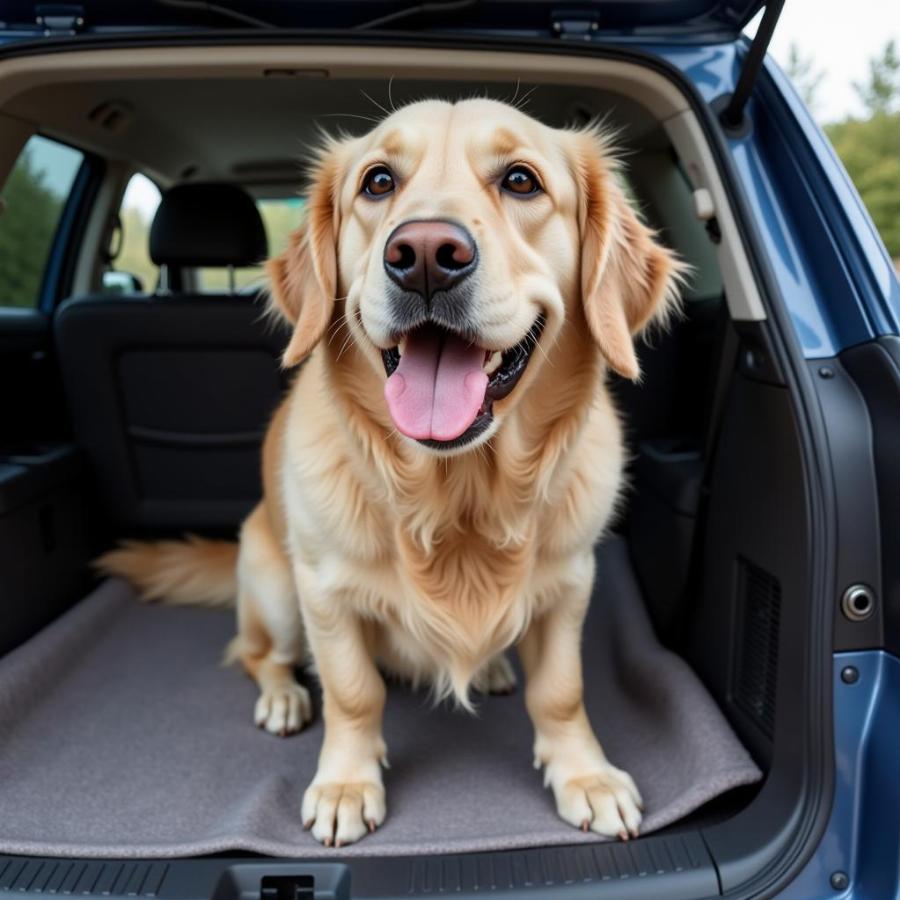Choosing the right dog transport crate is crucial for ensuring your furry friend’s safety and comfort during travel, whether it’s a quick trip to the vet or a cross-country adventure. With so many options available, finding the perfect crate can feel overwhelming. This comprehensive guide will equip you with everything you need to know about dog transport crates, from choosing the right size to making it a cozy haven for your beloved companion.
Why a Dog Transport Crate is Essential for Every Pet Parent
A dog transport crate is not just a travel accessory; it’s a valuable tool that provides numerous benefits for both you and your dog.
- Safety First: Crates act as a secure and familiar space for your dog, preventing them from roaming around the car and potentially distracting the driver or getting injured during sudden stops or sharp turns.
- Stress Reduction: For many dogs, the confined space of a crate can actually have a calming effect, especially in unfamiliar or stressful situations like car rides.
- Travel Ease: A crate provides a designated spot for your dog, making it easier to transport them in and out of the car and preventing them from jumping out unexpectedly.
- Emergency Preparedness: In the unfortunate event of an accident or natural disaster, a crate can act as a safe haven for your dog and make it easier to locate and transport them.
Choosing the Right Crate: Factors to Consider
Selecting the right dog transport crate is crucial for your dog’s well-being. Here are the key factors to keep in mind:
1. Size Matters: Finding the Perfect Fit
A crate that is too small will be uncomfortable and restrict your dog’s movement, while one that’s too large can make them feel insecure and increase the risk of injury during travel. The ideal crate should allow your dog to:
- Stand up comfortably without their head touching the top.
- Turn around easily without being cramped.
- Lie down in a natural, stretched-out position.
To determine the right size, measure your dog’s length (from nose to tail base) and height (from the floor to the top of their head or ears when standing). Add 2-4 inches to both measurements to allow for adequate space.
2. Types of Dog Transport Crates: Pros and Cons
a) Wire Crates:
- Pros: Excellent ventilation, visibility, lightweight, and affordable.
- Cons: May not be suitable for dogs who like to chew or escape, and offer less insulation in extreme temperatures.
b) Plastic Crates:
- Pros: More durable, secure, and provide better insulation and privacy.
- Cons: Can be heavier, less ventilation, and may not provide as much visibility.
c) Soft-Sided Crates:
- Pros: Lightweight, portable, and comfortable for dogs.
- Cons: Less durable, not suitable for chewers or escape artists, and offer minimal protection in case of an accident.
3. Material and Construction: Durability and Safety
Look for crates made from high-quality, durable materials that can withstand your dog’s weight and any potential chewing or scratching. Ensure the crate has secure latches and a sturdy frame that won’t collapse during travel.
4. Ventilation and Comfort: Keeping Your Dog Happy
Adequate ventilation is essential for your dog’s well-being, especially during warmer months. Choose a crate with multiple ventilation points to allow for proper airflow. Adding a comfortable bed or mat can make the crate more inviting for your furry friend.
Creating a Positive Crate Experience: Tips for Success
Introducing your dog to their crate should be a positive and gradual process.
- Make it Inviting: Place soft bedding, a favorite toy, and treats inside the crate to create a welcoming environment.
- Start Slowly: Begin by feeding your dog meals near the crate and gradually progress to feeding them inside with the door open.
- Short Sessions: Start with short crate sessions while you’re home and gradually increase the duration as your dog becomes more comfortable.
- Never Use as Punishment: The crate should be a safe and positive space, never a place for punishment.
Safety Tips for Transporting Your Dog
Once your dog is comfortable in their crate, it’s time to hit the road! Here are some essential safety tips:
- Secure the Crate: Always secure the crate in the car using seatbelts or cargo straps to prevent it from moving during transit.
- Never Leave Unattended: Never leave your dog unattended in a parked car, as temperatures can quickly become dangerous.
- Pack Essentials: Bring along water, food, a leash, waste bags, and any necessary medications for your dog.
FAQs About Dog Transport Crates
Q: Can I use a crate for potty training?
A: While a crate can be a helpful tool for potty training, it’s essential to choose the right size and avoid leaving your dog confined for extended periods.
Q: How do I clean a dog transport crate?
A: Most crates can be cleaned with soap and water. For tougher messes, a pet-safe disinfectant can be used.
Q: What should I do if my dog is anxious in the crate during car rides?
A: Covering the crate with a blanket to create a den-like environment or using calming aids like pheromone sprays can help reduce anxiety.
Looking for More Expert Advice on Caring for Your Canine Companion?
 Dog and Owner Embark on a Road Trip
Dog and Owner Embark on a Road Trip
Beaut Dogs is your ultimate resource for all things dog-related. From breed-specific information to comprehensive care guides, we’re here to help you navigate the wonderful world of dog ownership. For personalized advice and expert tips, don’t hesitate to reach out to our team at [email protected]. Beaut Dogs – Your trusted partner in providing the best care for your furry friend.